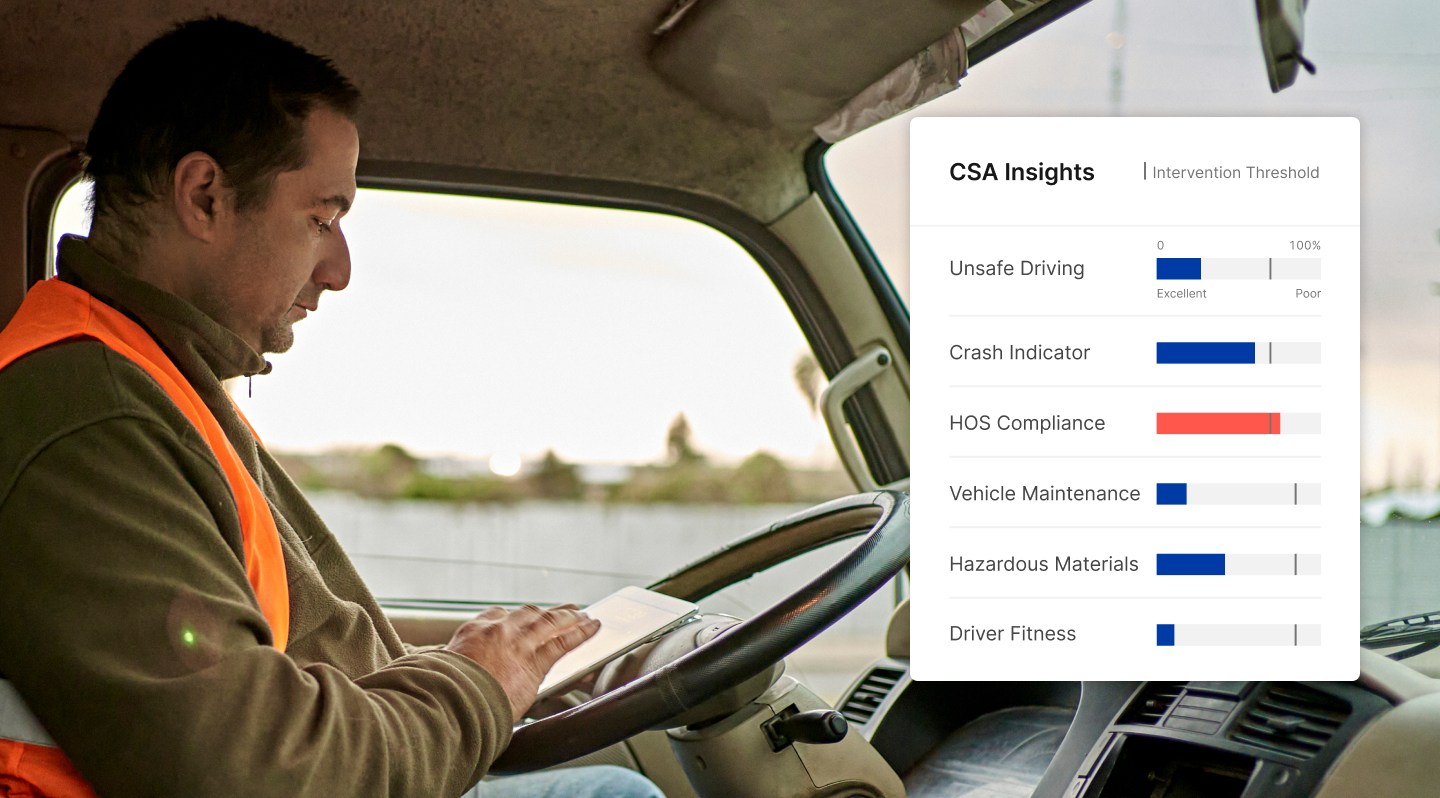The Compliance, Safety, Accountability (CSA) program, managed by the Federal Motor Carrier Safety Administration (FMCSA), offers a comprehensive overview of a motor carrier’s safety record. While final CSA scores aren’t publicly accessible, performance data is available, and adverse information can impede business growth. Understanding and managing your CSA score is crucial for driver retention and profitability.
What is a CSA score for drivers?
The CSA program aims to enhance safety for carriers and the public by meticulously recording safety metrics. A motor carrier’s CSA score reflects their overall safety performance, with higher scores indicating poorer safety records. Viewing your CSA score as a tool for improvement rather than a burden can lead to significant benefits in the industry.
The BASICs behind the CSA FMCSA program
Launched in November 2010, the CSA program enforces FMCSA’s compliance standards to promote safety. The program evaluates seven Behavior Analysis and Safety Improvement Categories (BASICs):
- Unsafe Driving: Reckless or careless operation of vehicles.
- Crash Indicator: Histories or patterns of high crash involvement.
- Hours-of-Service (HOS) Compliance: Non-compliance with HOS regulations.
- Vehicle Maintenance: Failure to properly maintain equipment.
- Controlled Substances/Alcohol: Use or possession of controlled substances/alcohol.
- Hazardous Materials Compliance: Unsafe handling of hazardous materials.
- Driver Fitness: Unqualified drivers operating a commercial motor vehicle.
Your CSA score report indicates your percentile rankings in these categories compared to industry averages.
CSA score warning letters and red flags
The FMCSA issues warning letters when BASIC scores approach concerning levels. Safety performance data is updated monthly through the FMCSA’s Safety Measurement System (SMS). While warning letters don’t require a direct response, they serve as prompts to encourage safety improvements before more severe actions are taken. Notably, violations remain on a carrier’s record for two years, emphasizing the importance of addressing safety issues promptly.
How do I check my CSA score?
To access your CSA score:
- Register for a PIN: Obtain a PIN using your USDOT or MC number through the FMCSA Portal. FMCSA Portal
- Access the SMS: Log in to the FMCSA Safety Measurement System to view your scores. FMCSA SMS
While your composite CSA report isn’t public, individual BASIC scores are accessible via a basic DOT number search. Public access to certain BASIC statistics underscores the importance of maintaining a strong safety record.
What’s a good CSA score?
CSA scores range from 0 to 100, with higher numbers indicating worse safety performance. Elevated CSA scores can lead to compliance reviews or out-of-service orders if not addressed. Maintaining low scores is essential to avoid these repercussions.
Can I improve my score?
Improving your CSA score requires a proactive approach to safety and compliance. Here are six tips to help you succeed:
- Conduct Pre-Trip Inspections: Perform thorough inspections of every vehicle before each trip, focusing on common violation areas like broken lights, tires, and brakes.
- Implement Safety Programs: Utilize fleet safety and coaching solutions to foster a culture of safety within your organization.
- Monitor Driver Fitness: Use advancements in driver workflow to ensure drivers are fit for duty and to reduce the risk of fatigued driving.
- Comply with Hours-of-Service Regulations: Use electronic logging devices (ELDs) to monitor and enforce HOS compliance. FMCSA ELD Information
- Challenge Inaccurate Violations: If you receive a violation that you believe is incorrect, you have two years to challenge it through the FMCSA’s DataQs system.
- Stay Informed: Regularly review your safety data and stay updated on FMCSA regulations to ensure ongoing compliance.
By adopting these practices, you can maintain a positive CSA score, demonstrating to employees and clients that safety and profitability are interconnected.
Improve CSA scores with Motive
Improve your CSA score and streamline compliance with Motive. Empower safer performance.




